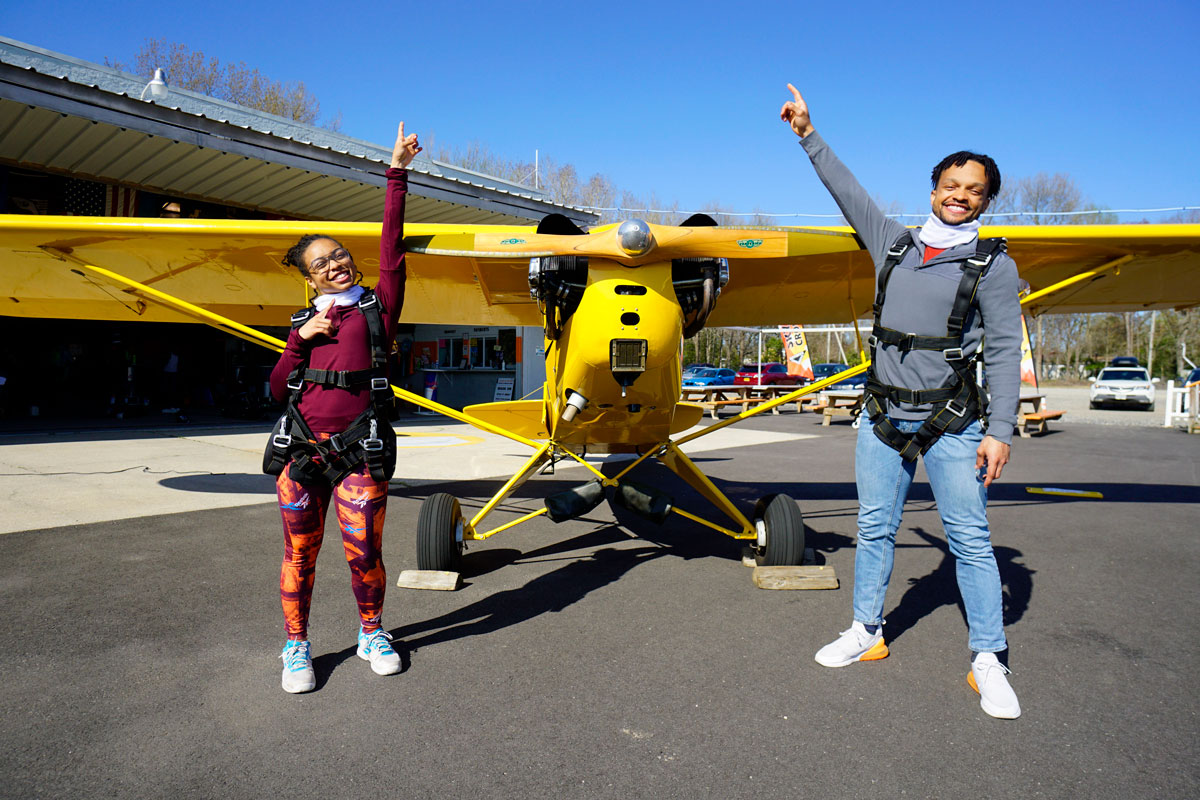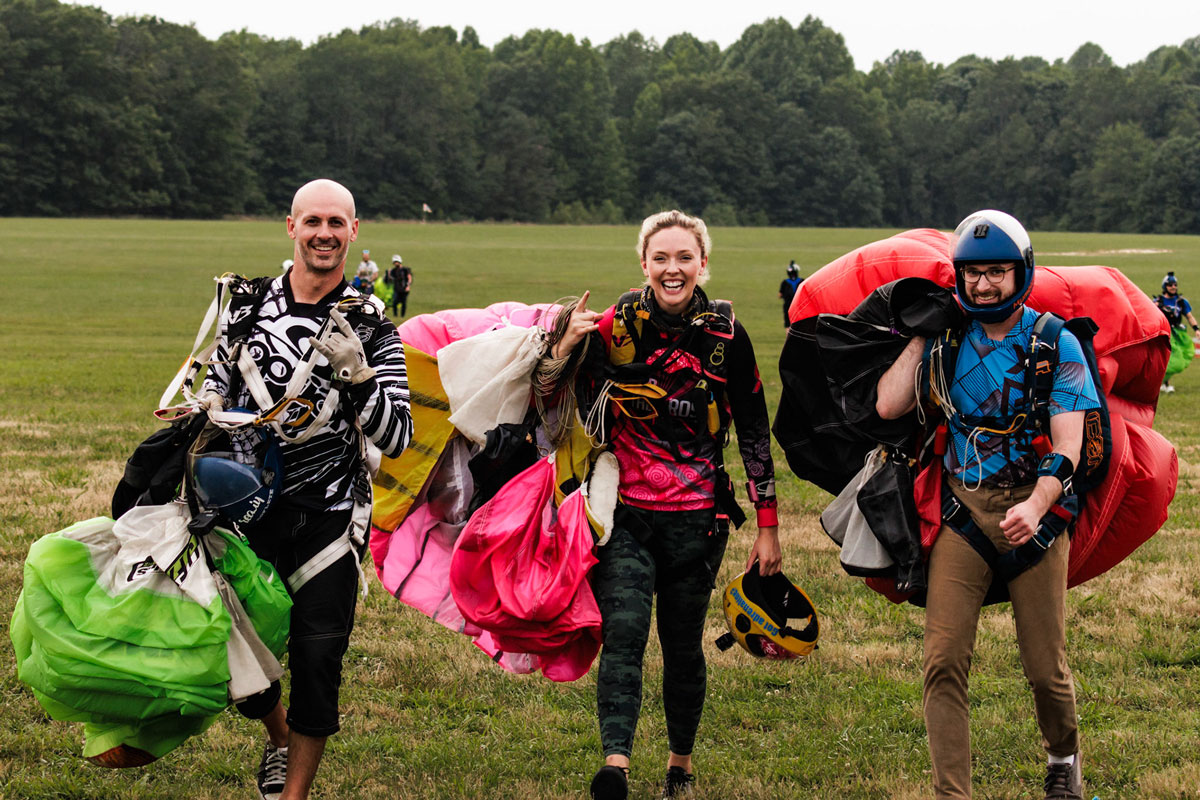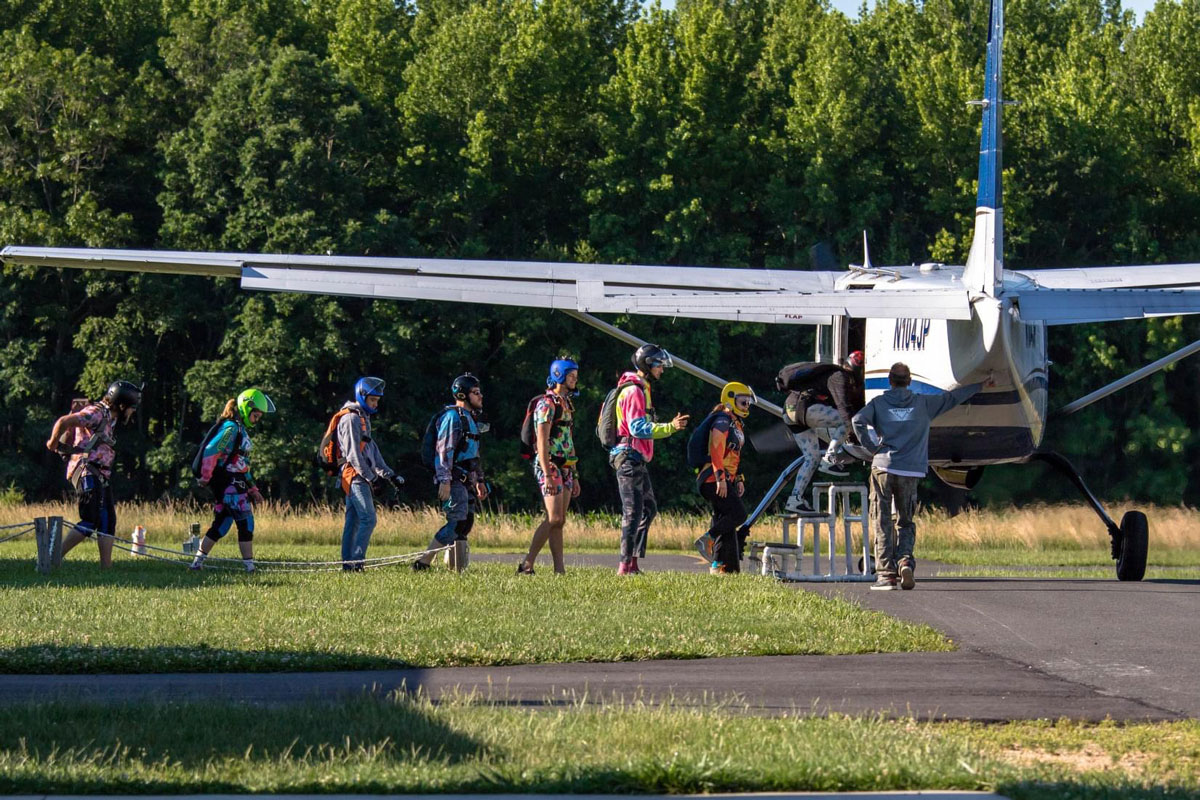Skydiving Safety Statistics for First-Time Tandem Jumpers

Jumping out of planes thousands of feet above the ground seems like a huge leap of faith … so, why do so many people do it? For those hesitant about taking the step into the great blue sky, safety is understandably the first concern. Tandem skydiving safety statistics boast an impressive track record due to rigorous training, state-of-the-art equipment, and consistent advancements in skydiving technology.
As you prepare for your big day, feeling apprehensive is natural. But fear not! Skydiving safety statistics are sure to surprise you – they’re not just numbers on a page, but a testament to our unwavering commitment to safety and providing the best experience for YOU. Let’s dive in!

Skydiving Safety Statistics Overview
A beautiful thing about skydiving as a sport is that the learning never stops. Whether you have made one tandem skydive, or thousands of solo jumps, it’s critical to take something away from every single skydive.
Skydivers are passionate about safety-oriented progression, and this is one reason understanding skydiving statistics is so critical. When we are able to keep track of incidents and research why they occurred, we can make adjustments and learn from missteps to ensure they don’t repeat.
The United States Parachute Association (USPA) is the primary governing body for skydivers and skydiving operations in the US. The USPA does a fantastic job at keeping statistics of skydiving accidents records and sharing them with the skydiving community. Skydive Cross Keys is a proud USPA Group Member Dropzone, which means we place safety at the forefront by strictly adhering to the regulations and recommendations set by the USPA.
Skydiving Accident Statistics
Why do skydiving accidents happen? Is it mostly human error, or a gear malfunction? Well, both can happen, but the cause of most skydiving accidents is human error. Skydiving safety studies are conducted by the USPA and the Federal Aviation Administration (FAA), which also oversees skydiving operations.
The most common cause of a skydiving injury is an intentional low turn during the landing sequence. This happens when the skydiver maneuvers their gear (their harness, steering toggles, and risers) to initiate a turn close to the ground. Low turns can also occur unintentionally, and happen when the skydiver makes a rash decision combined with not understanding the dynamics of their parachute. It is critical to understand and respect personal limits and know your expertise in the sport, not become complacent, and receive proper coaching in canopy piloting.
What about when a malfunction happens? From day one of training, licensed skydivers are taught when to enact emergency procedures (cutting away the main canopy, and employing the reserve canopy). Malfunctions in gear can be avoided by observing manufacturer recommendations and remaining vigilant in gear checks on your own gear, and the gear of others.
Skydiving Injury Rates
What are the odds of injury from skydiving? The odds of a skydiving injury are not altogether known, because not all injuries are self-reported. What is considered to be an injury is also subjective – some would consider a tumble upon landing resulting in a bruised knee an injury, while others would chalk this up to their own error and see no need to report.
What is the cause of most skydiving accidents? As aforementioned, the prominent cause of skydiving accidents is human error – specifically, and perhaps surprisingly, by licensed skydivers making solo jumps. This includes parachute malfunctions due to a packing error, not taking proper care of one’s gear, or becoming complacent in freefall or canopy flight maneuvers.
Most skydiving injuries can be prevented or mitigated with an attitude of respect for the parameters of the sport and an awareness of the pitfalls of complacency.
Skydiving Fatality Statistics
Safety statistics of skydiving are reported to the entire skydiving community, and are closely monitored for trends. According to the USPA, there were approximately 3.65 MILLION skydives made in the US in 2023, 10 of which resulted in fatalities. This means there was about one fatality per every 370,000 jumps made. Statistically, the death rate in skydiving is considerably very, very low.
What are the odds of a parachute not opening? Parachutes have one job: to open. And they do a pretty great job at this! In the event the main parachute has an issue, skydivers are able to initiate their emergency procedures to deploy the reserve parachute. Per FAA regulations, every single solo and tandem skydiving rig is equipped with two parachutes, and all jumpers are thoroughly trained to deploy them.

Tandem Skydiving Safety Measures and Regulations
Want to know what tandem instructors and solo skydivers are fanatic about? Gear checks! Skydiving gear is inspected every single time it is jumped during something called a gear check. Gear checks are performed by the jumper using the gear. On top of this, reserve parachutes are unpacked, thoroughly inspected, and repacked by an FAA-certified parachute rigger every 180 days, even if they haven’t been used.
Speaking of gear, what about advancements in skydiving technology? Skydiving safety equipment includes the Automatic Activation Device (AAD) and the Reserve Static Line (RSL).
An AAD is a small computer that calculates how fast the skydiver is falling while determining their altitude. If the jumper is too low and going too fast (indicating they’re in freefall when they should be under the parachute), the AAD is designed to initiate the deployment of the reserve canopy. All tandem skydiving systems are required to have an AAD. At Skydive Cross Keys, we also require all sport rigs to be equipped with AADs to be allowed to jump at our dropzone. An RSL is a device that acts as a tripwire that immediately deploys the reserve during a main cutaway. Skydiving safety measures like these save lives!
Perhaps the most important tandem skydiving safety measure for a tandem student to consider is the quality of your instructor. USPA-rated tandem instructors are required to meet various expectations and qualifications, like obtaining an FAA Class-III Medical Certification. Prior to achieving their tandem instructor rating, they must:
- Have at least 500 skydives
- Hold a USPA D-license (the most advanced license attainable)
- Have at least 3 years in the sport
- Hold a USPA Coach rating
Prospective tandem instructors must go through a course of written, oral, and physical examinations to prove their competency in tandem skydiving. Remember that tandem skydiving instructors do what they do because they love sharing the sport with newcomers, just like you.
Comparative Analysis
What is riskier than skydiving? Many things! Oddly enough, it’s statistically more dangerous to drive to the dropzone in your vehicle than it is to make a skydive.
Skydiving accident statistics are significantly lower than those of other extreme sports or daily activities. Check out these stats from the National Safety Council:
- Odds of being in a fatal car accident: 1:93
- Odds of drowning: 1:747
- Odds of dying due to choking while eating: 1:2,659
Remember, the odds of dying skydiving in the US are 1:370,000. Now that’s a perspective check!

Tips for Safe Tandem Skydiving
Tandem skydiving safety is paramount in the skydiving community. One of the biggest fear factors of being a tandem student (that’s you!) is placing your trust in someone else. This is why it is so critical to choose a dropzone that is reputable for your first jump and any subsequent jumps. Choosing a dropzone should be like choosing a heart surgeon – chances are you won’t go to the cheapest or closest one.
A first skydive can be a life-changing experience, one that is tattooed on the heart forever, if you will, so choose a good one! We suggest checking out reviews of your potential dropzone and giving them a call to check the vibe. Are you met with patience and a welcoming tone when you have a question, or do you feel rushed off the phone?
USPA Safety Day
What is Safety Day? Every year in March, right before we kick off our busy season, our dropzone (and many others across the country) hosts Safety Day. Although we have safety at the tip-top of our minds every time we step foot on the dropzone, this day is dedicated to promoting awareness, skydiving safety guidelines, and education throughout the community. We go through the best practices to mitigate risk, talk about any new expectations or advancements, and reinforce essential safety procedures.
The Skydive Cross Keys community prides itself on transparency of our skydiving safety standards and skydiving safety records, and if you ever have any questions, please reach out!
All That to Say…
Skydiving is an extreme sport that carries an inherent level of risk (like anything else), and since we go to great lengths to mitigate risk, the chances of having a freakin’ fantastic skydive are very, very high. If you’re curious whether skydiving is the right adventure for you, take our skydiving quiz. And if you’re ready to take the plunge, book a skydive and experience the unparalleled freedom of human flight with us! Blue skies!